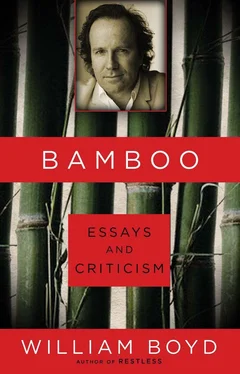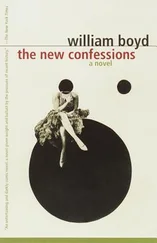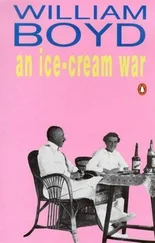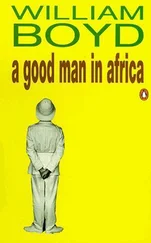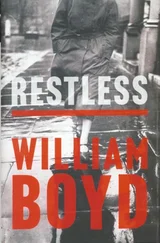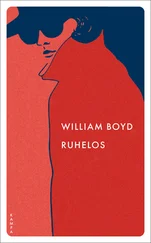1988
Raymond Carver(Review of “Where I’m Calling From,” The Selected Stories)
“The style is the man,” Buffon said, and one wonders what he would make of a man who wrote like this:
This friend of mine from work, Bud, he asked Fran and me to supper. I didn’t know his wife and he didn’t know Fran. That made us even. But Bud and I were friends. And I knew there was a little baby at Bud’s house. That baby must have been eight months old when Bud asked us to supper. Where’d those eight months go?
These are the opening lines of a short story called “Feathers” and in them we are presented with what one might call stereotypical Raymond Carver: the demotic first person voice, the short sentences, the reduced vocabulary, the pointed unliterariness (the ugly repetitions of “know” and “Bud”). A few more sentences and the picture is complete: Bud and the narrator are blue-collar workers, the context is parochial — white, working class, middle America — and the events of the story, its narrative, minimal in the extreme.
This selection of thirty-seven stories was made by Carver himself before his premature death in 1988 at the age of fifty. The consistency of tone, style, setting and mood of the stories is remarkable, and, with a few variations, they roughly conform to the stereotype outlined above. Occasionally the protagonists become more affluent (or less) and occasionally the pronoun shifts to the third person, but it is clear that Carver had found his two inches of ivory and was prepared to work it as doggedly as he could.
And there is nothing wrong with this. The only danger is that by confining your focus and by making your voice so insistently individual and unchanging an element of self-parody unwittingly creeps in, and the writer becomes a victim of his own success. There may be a rough rule of thumb here that needn’t only apply to writers, namely: the easier it is to parody an artist’s style, the sooner the artist ought to change it. Something similar happened to Hemingway, a writer with whom Carver can stand some comparison. The style of Hemingway’s early stories was as terse, uncompromising and idiosyncratic as Carver’s and it made a similar impact. Each man, it seemed, had found a fully formed and distinct voice that was perfectly attuned to their particular vision of the world and that harmoniousness lent the prose an unmistakable authority and literary heft. But it was not sustainable; or rather it was, but a price had to be paid when every Eng. Lit. undergraduate could soon turn in a passable Hemingway parody with no trouble at all. And something of the same law of diminishing returns applies to Carver’s stories, even though, as he himself claimed, he made efforts in his last collection to broaden his canvas and enrich his palette. In a late story such as “Blackbird Pie” where the narrator appears to be an academic, the voice is educated and peppered with literary allusions but it seems epicene, uncarveresque. We want a misanthropic redneck in a trailer park musing on how awful life is.
This phenomenon, this double bind, occurs in various art forms but bears particularly on short story writers and painters. Throughout the ups and many downs of his career Scott Fitzgerald was constantly asked to reprise his tales of ditsy flappers in the Twenties, and Picasso’s reputation is still haunted by the enormous popularity of his “Blue period” paintings. Any number of other examples come to mind but the “problem” remains the same: what is first acclaimed as powerful and original soon becomes confining and restricting. The artist wants to develop and advance but does so at the risk of losing what has drawn the public to the artist in the first place.
Thirty-seven short stories may seem a smallish oeuvre upon which to build a significant reputation yet there is no doubt that Carver’s achievement is considerable and that he deserves his place in the pantheon of American letters. The down-and-out, the hobo, the underachievers of American life have all had their chroniclers (from Damon Runyon to John Fante to Charles Bukowski) but Carver’s bleak but fundamentally humane point of view has a distinct late twentieth-century feel to it, if only because it is so resolutely low-key, the prose studiedly refusing to indulge in sentimentality, sensationalism or bathos. In spite of all the despair and waste, the hardship and relentless grind, Carver’s stories do somehow seem to celebrate some lasting aspects of the human condition, however minimal, conjuring up something marginally positive, a quality of fellow feeling that may amount to nothing more than a recognition that — at the end of the day — we are all in this mess together, but which gives the stories a compelling dry-eyed poignancy, a bitter but intensely moving authenticity.
1993
Michael Ondaatje(Review of The English Patient)
In a semi-ruined villa somewhere in the north of Italy in the final year of World War Two a young Canadian nurse called Hana — numbed by the horrors of war — cares for a hideously burned aviator who has no name. He is the English patient, his brittle, cauterized skin the colour of aubergine. He is alone in the villa, the nurse his sole company, left behind to die, one assumes, by the field hospital that once occupied the building. The nurse bathes him, reads to him, listens to him and injects him with morphine to mask the agony of his terrifying burns.
This is the opening of Michael Ondaatje’s new novel, and it is hard to imagine a better and more disturbing mise en scène, combining as it does all manner of romantic, gothic and mysterious elements: a young and beautiful woman tending to a terminally disfigured man in an antique and classical landscape ravaged by war. What secrets lie here, what explanations, what undercurrents of feeling, of emotion? Guilt and loss, pain and redemption, endurance and love… The book is gravid with the potential to move and beguile.
And Ondaatje does not disappoint. A poet turned novelist, his interest in his characters and their situation leans heavily towards their symbolic and elegiac aspects. And indeed, this curious conjunction of nurse and patient could have occurred in any war in any place in almost any time. A reader expecting the conventions of a realistic novel such as Hemingway’s A Farewell to Arms (another juxtaposition of nurse and patient in an Italian war) will be frustrated. Ondaatje eschews the nuts and bolts of period detail, the roughage of authentic fact, for the trenchant reverberation of metaphor and image. And in so doing the book sets entirely its own tone and its own conventions. To ask a question of it along the lines of: would the senior staff of a World War Two army field hospital really abandon a traumatized young nurse and one of its badly burned patients in a bomb-damaged villa while it moved on to safer and more secure quarters? is redundant, not to say pedantic. Ondaatje’s novel is hermetic and self-sufficient, its conventions and its final reality — and its strange power — belong to it alone.
In the event the nurse, Hana, and her patient are not left to each other’s company for long. They are joined by a man named David Car-avaggio, a friend of Hana’s late father. Caravaggio, a former cat-burglar from Toronto, has spent the war in intelligence and is himself recovering from wounds, only this time wounds inflicted by torture — his thumbs have been amputated. He claims to be concerned for Hana’s health and safety but it soon becomes clear that his real interest is in the English patient. Soon the trio is augmented by a fourth figure — a young Sikh bomb disposal expert, called Kip, who billets himself in the villa grounds while he tries to defuse the multiplicity of booby traps that the retreating Germans have set in the Tuscan countryside.
Читать дальше
